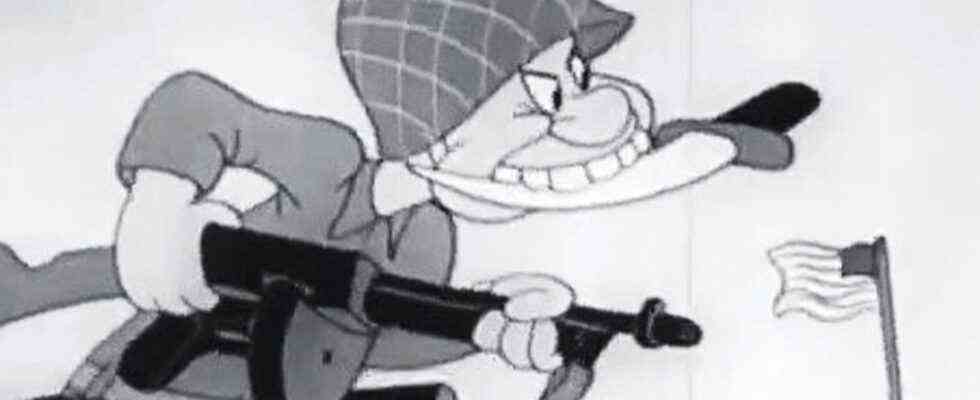This WWII cartoon is definitely not intended for children.
The animated series about the eponymous character “Private Snafu” was shown to members of the US armed forces as part of film screenings by “Army-Nany Screen Magazine” every two weeks worldwide.
The aim of the demonstrations was to boost the morale of the armed forces and to teach military subjects and principles to young soldiers with a low level of education.
To this end, the clumsy hero in the films usually violates military protocol, is confronted with fatal consequences because of his carelessness and learns a lesson.
An example: He secretly writes his girlfriend a letter containing sensitive information – and gets caught in a Japanese ambush.
At the time of World War II, the cartoons were subject to military secrecy. The production was carried out under strict safety precautions.
In creating the series, production company Warner Bros. Cartoons was not bound by the cartoon guidelines of the time, allowing them to incorporate crude language and offensive humor into the films.
Well-known industry giants were involved in the production of the top-secret films: Most of the stories were written by children’s book author Theodor “Dr. Seuss” Geisel. He is also known for inventing the Christmas hating “Grinch”. Bugs Bunny voice actor Mel Blanc lends his voice to Private Snafu.
Due to the racist and stereotyped depiction of enemy soldiers, the short films are often criticized today. According to the US National Archives:
“The cartoons often contain negative depictions of the Japanese. While the racist imagery is difficult to condone from a modern perspective, the cartoons attempted to unite soldiers against a common enemy.”
The character’s name “Private Snafu” is a reference to US military language. “Snafu” is an acronym for “Situation Normal All Fucked Up.”
The cartoon series is said to have enjoyed great popularity among US soldiers at the time it aired. Today, the films provide a small insight into the everyday life of the US armed forces during the Second World War.

